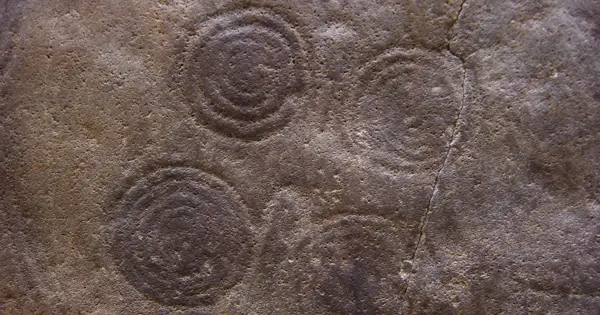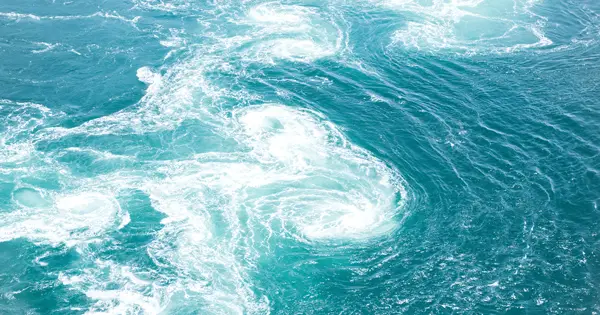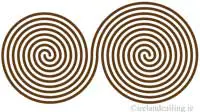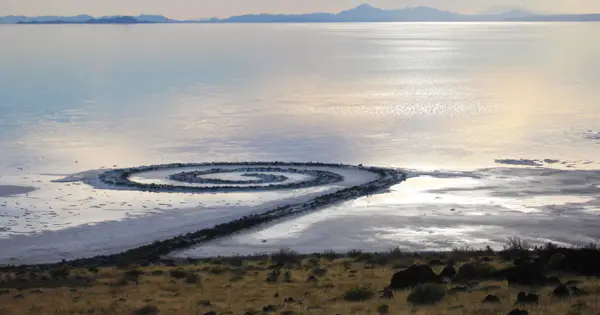The spiral pattern is one of the most common in nature, from snail shells to whirlpools to entire galaxies. It is a shape as ancient as time itself.
It is also one of the oldest patterns created by humans, with evidence of rock carvings throughout the world, some dating back tens of thousands of years. So it is not surprising that it features prolifically in Celtic culture.

In fact, it is the oldest symbol in Celtic culture. In Celtic belief, it is thought to represent the sun or the radiation of ethereal energy. This illustrates the sun’s life-giving energy, ever spiralling outward to sustain life on Earth.
Its connection with the natural world has also led some to perceive it as a symbol of growth, transformation, and renewal.
Travelling

The symbol of the spiral in various forms can be found on carvings throughout Europe where the Celts travelled. This has led to a belief that it could also represent migration, a perpetual movement.
The Celts were travelling tribes and this theory matches up with other migratory tribes who used the same symbols thousands of miles away. There is also a link to water.

The spiral occurs naturally in the form of waves and whirlpools. Other cultures have used it as a symbol to depict water. It also found its way onto ancient maps and navigation tools. Seafarers, guided by the stars and the sun, relied on these symbols to chart their courses across uncharted waters. Some of the spiral carvings in Scandinavia are thought to represent the stars and their positions in the sky.
The Double Spiral
The double spiral is found at many Celtic grave sites and has been linked, not only to the sun but to the idea of death and rebirth. This could mean the transference of energy from the body to the soul or the body giving life back into the earth, a constant cycle of life, which is a popular theme in Celtic symbolism.

In relation to the sun, this symbol is thought to represent the solstices or the equinoxes. Sometimes the double spiral appears as a loose anti-clockwise spiral joined with a tight clockwise spiral.

This is thought to represent the large, warm summer sun and the small shrinking winter sun whereas equal sized spirals represent the two equinoxes where the days and nights are of equal length, a sign of balance.
Clockwise and anti-clockwise spirals also represent energy in different ways – clockwise: emergence and growth, anti-clockwise: drawing inward.
A Triskele is a triple Spiral. It had huge significance for the Celts. Find out more about the triskele
The Spiral in Modern Culture
Even though the Celts are long gone, their spirals are still with us today. People find these symbols beautiful and meaningful. They put them in paintings, sculptures, jewellery, and tattoos. It’s a way of keeping the old stories and wisdom alive, reminding us of our connection to nature and the cycles of life.

One such sculpture is Robert Smithson’s Spiral Jetty (1970). It is a 460-meter-long (1500 foot) spiral made of mud, rock and salt crystals that juts out into The Great Salt Lake, Utah. It demonstrates the beauty of nature while drawing inspiration from symbolism throughout history.
The symbol remains important in our lives today. When you see it in art, fashion, or even logos, it’s a reminder of how things constantly change. The spiral helps us think about growth, unity, and the journey we’re all on, just like the ancient Celts did all those years ago.
All images copyright Ireland Calling
